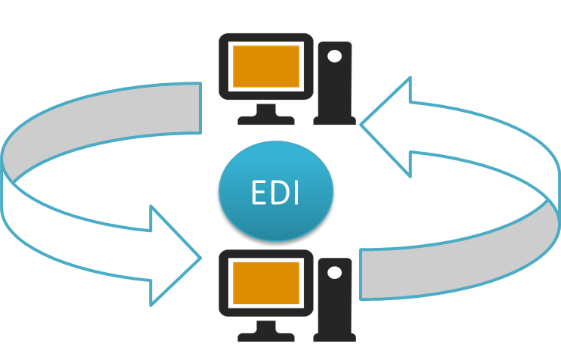What is EDI? Electronic Data Interchange is the computer-to-computer exchange of business documents in a standard electronic format between business partners.
By moving from a paper-based exchange of business document to one that is electronic, businesses enjoy major benefits such as reduced cost, increased processing speed, reduced errors and improved relationships with business partners. Learn more about the benefits here. »
Each term in the definition is significant:
- Computer-to-computer– EDI replaces postal mail, fax and email. While email is also an electronic approach, the documents exchanged via email must still be handled by people rather than computers. Having people involved slows down the processing of the documents and also introduces errors. Instead, documents can flow straight through to the appropriate application on the receiver’s computer (e.g., the Order Management System) and processing can begin immediately. A typical manual process looks like this, with lots of paper and people involvement:

The EDI process looks like this — no paper, no people involved:

- Business documents – These are any of the documents that are typically exchanged between businesses. The most common documents exchanged via EDI are purchase orders, invoices and advance ship notices. But there are many, many others such as bill of lading, customs documents, inventory documents, shipping status documents and payment documents.
- Standard format– Because EDI documents must be processed by computers rather than humans, a standard format must be used so that the computer will be able to read and understand the documents. A standard format describes what each piece of information is and in what format (e.g., integer, decimal, mmddyy). Without a standard format, each company would send documents using its company-specific format and, much as an English-speaking person probably doesn’t understand Japanese, the receiver’s computer system doesn’t understand the company-specific format of the sender’s format.
- There are several EDI standards in use today, including ANSI, EDIFACT, TRADACOMS and ebXML. And, for each standard there are many different versions, e.g., ANSI 5010 or EDIFACT version D12, Release A. When two businesses decide to exchange EDI documents, they must agree on the specific EDI standard and version.
- Businesses typically use an EDI translator – either as in-house software or via an EDI service provider – to translate the format so the data can be used by their internal applications and thus enable straight through processing of documents.
- Business partners – The exchange of documents is typically between two different companies, referred to as business partners or trading partners. For example, Company A may buy goods from Company B. Company A sends orders to Company B. Company A and Company B are business partners.
Credit: edibasics.com

